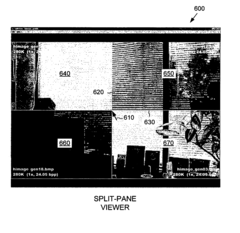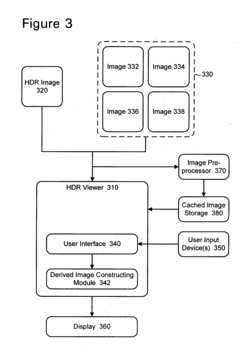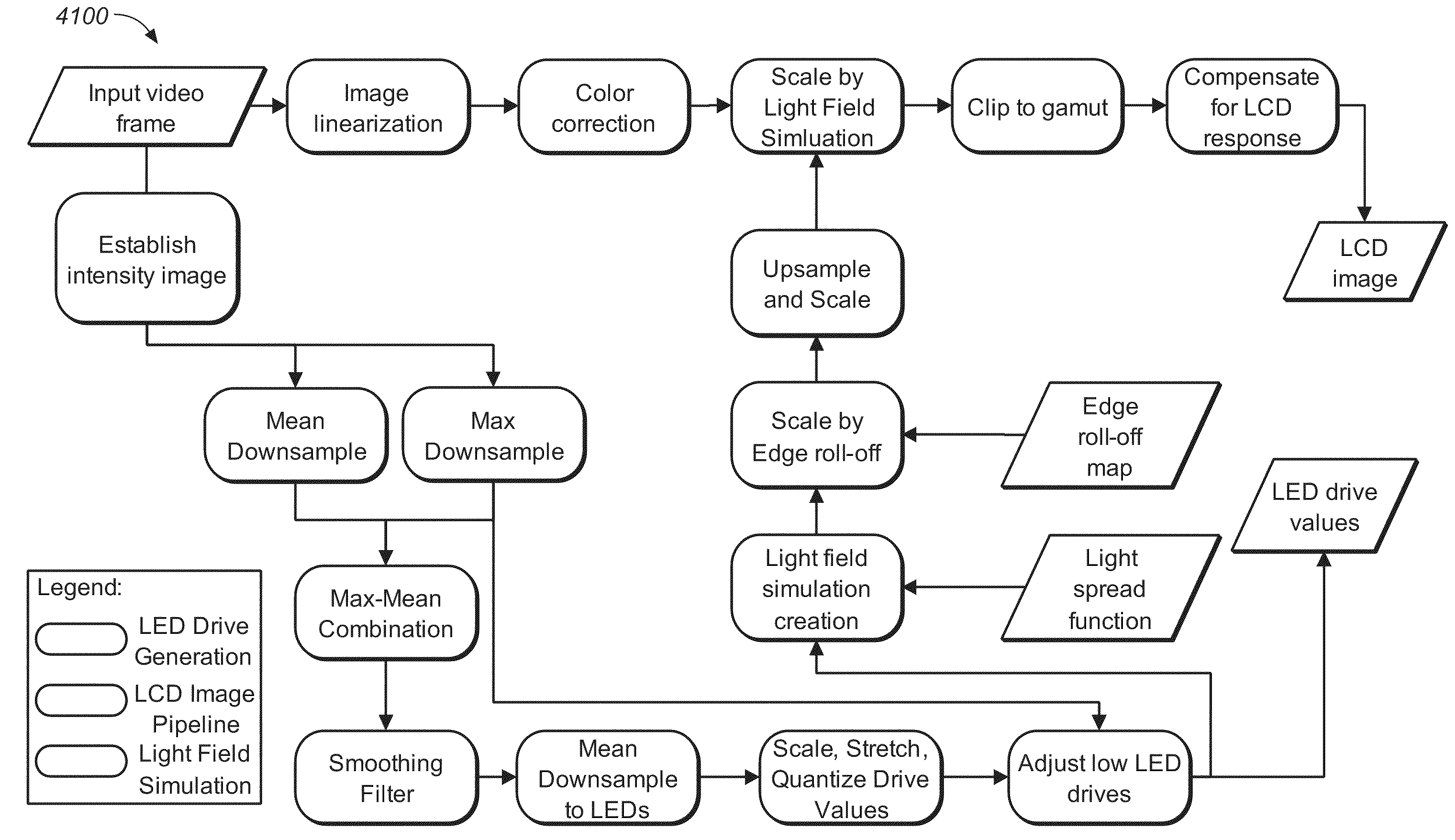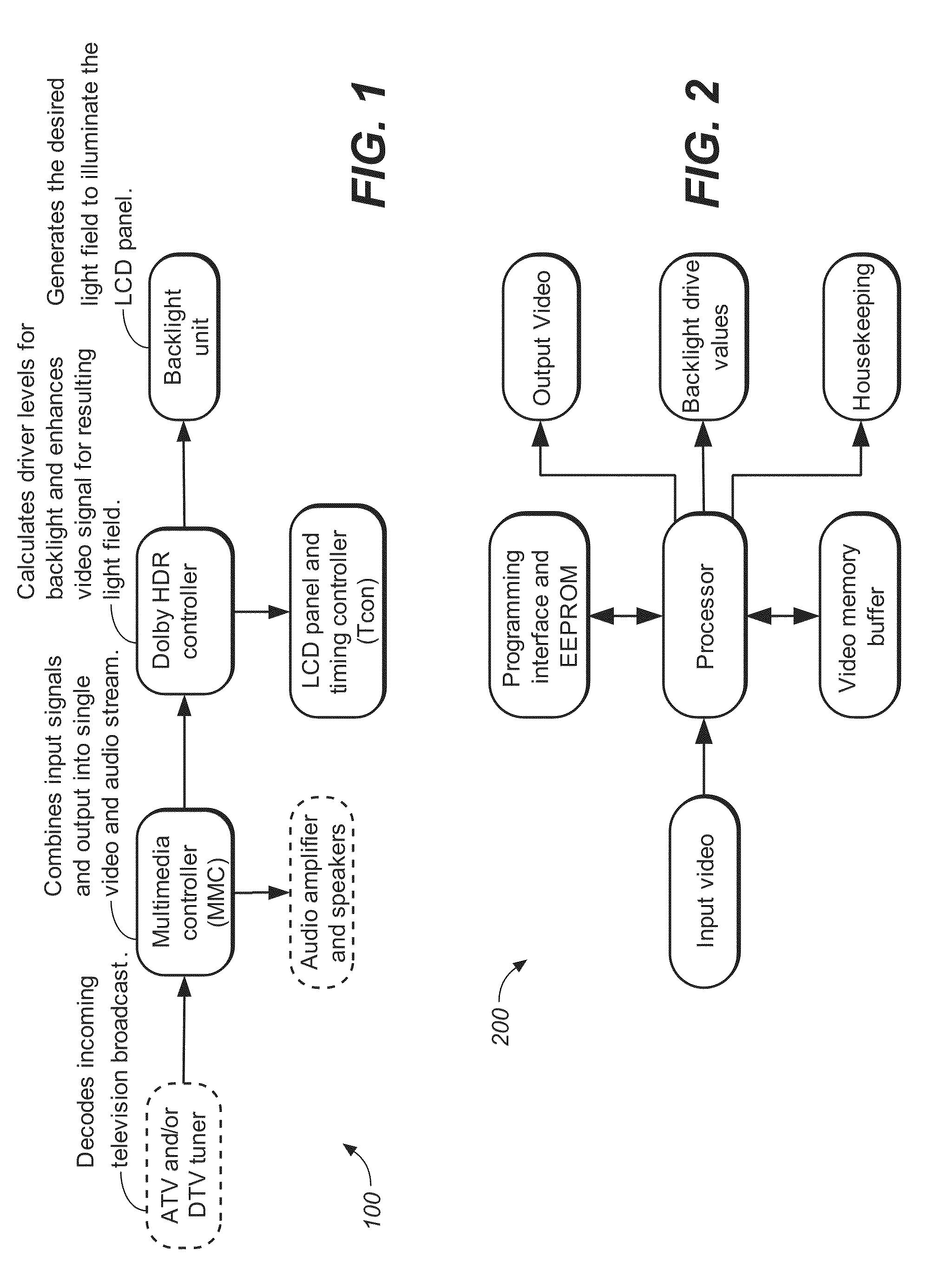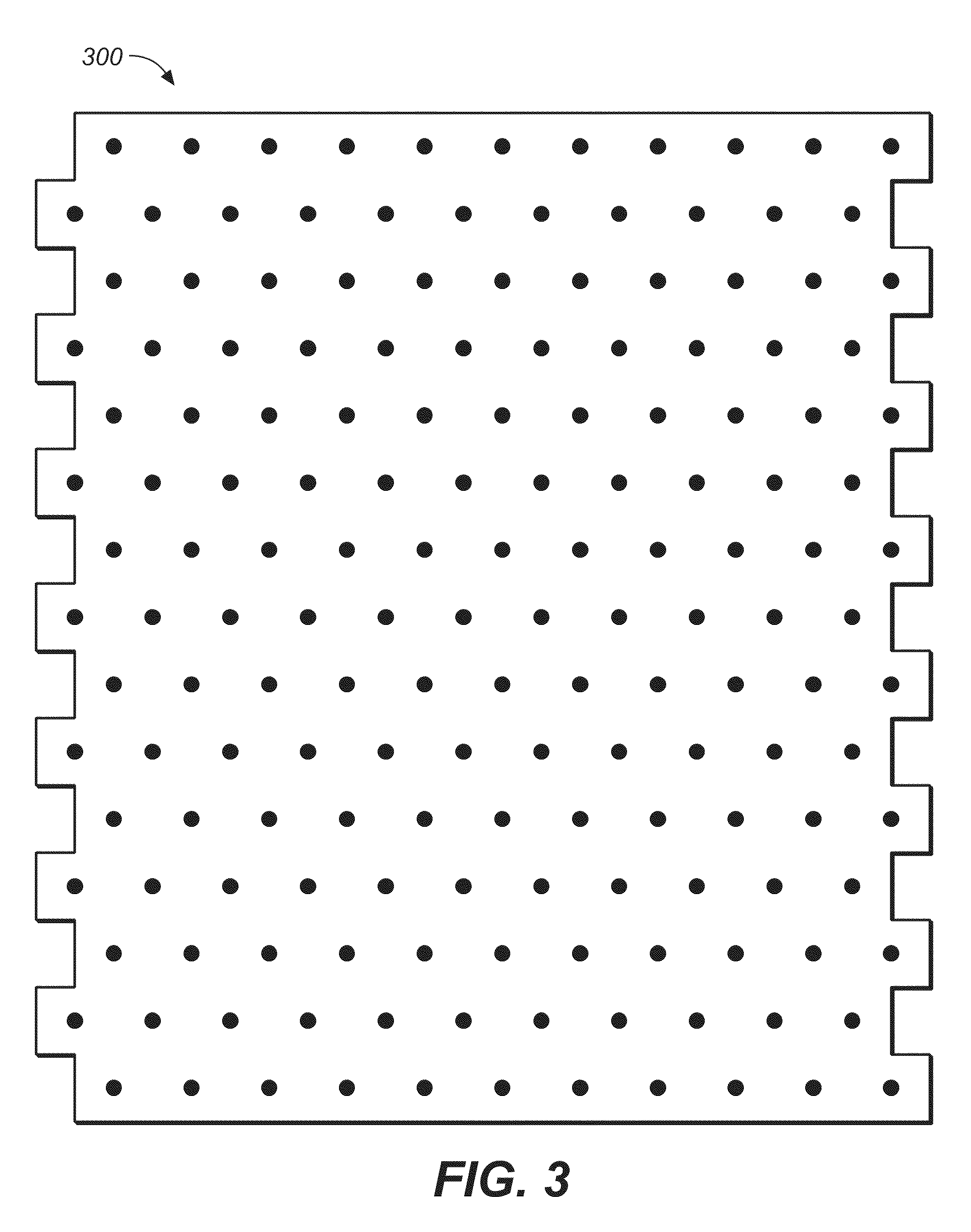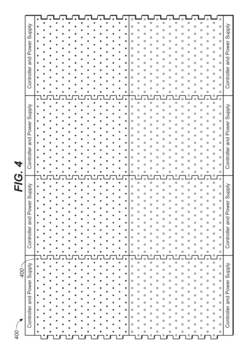Investigating the Benefits of Dolby Vision in Public Display Systems
JUL 30, 20259 MIN READ
Generate Your Research Report Instantly with AI Agent
Patsnap Eureka helps you evaluate technical feasibility & market potential.
Dolby Vision Evolution and Objectives
Dolby Vision, a cutting-edge High Dynamic Range (HDR) technology, has undergone significant evolution since its inception in 2014. Initially developed for cinema and home entertainment, Dolby Vision has expanded its reach to encompass a broader range of display technologies, including public display systems. The primary objective of Dolby Vision in this context is to deliver superior image quality with enhanced contrast, brightness, and color accuracy in diverse viewing environments.
The evolution of Dolby Vision for public display systems has been driven by the increasing demand for immersive visual experiences in various settings, such as digital signage, outdoor advertising, and information displays. As the technology progressed, it adapted to address the unique challenges posed by public viewing scenarios, including varying ambient light conditions and wider viewing angles.
One of the key milestones in Dolby Vision's evolution was the development of adaptive algorithms that dynamically adjust content based on the display capabilities and ambient lighting conditions. This advancement has been particularly crucial for public display systems, where environmental factors can significantly impact visual quality.
Another important objective in the evolution of Dolby Vision for public displays has been the optimization of power consumption. As public displays often operate for extended periods, balancing exceptional visual quality with energy efficiency has become a priority. This has led to the development of more sophisticated local dimming techniques and power management systems tailored for large-format displays.
The expansion of Dolby Vision's color gamut and bit depth capabilities has also been a focal point in its evolution. The technology now supports a wider range of colors and more precise gradations, enabling public displays to showcase content with unprecedented vibrancy and detail. This enhancement is particularly beneficial for applications such as product showcases, art installations, and interactive information kiosks.
Interoperability and standardization have been ongoing objectives in Dolby Vision's development. As the technology gained traction in the public display sector, efforts were made to ensure compatibility with various content creation tools, distribution systems, and display hardware. This focus on interoperability has facilitated wider adoption and integration of Dolby Vision across diverse public display ecosystems.
Looking ahead, the continued evolution of Dolby Vision in public display systems aims to further improve visual performance in challenging outdoor environments, enhance scalability for ultra-large format displays, and integrate with emerging technologies such as augmented reality and interactive touch interfaces. These objectives align with the growing trend of creating more engaging and immersive public spaces through advanced visual technologies.
The evolution of Dolby Vision for public display systems has been driven by the increasing demand for immersive visual experiences in various settings, such as digital signage, outdoor advertising, and information displays. As the technology progressed, it adapted to address the unique challenges posed by public viewing scenarios, including varying ambient light conditions and wider viewing angles.
One of the key milestones in Dolby Vision's evolution was the development of adaptive algorithms that dynamically adjust content based on the display capabilities and ambient lighting conditions. This advancement has been particularly crucial for public display systems, where environmental factors can significantly impact visual quality.
Another important objective in the evolution of Dolby Vision for public displays has been the optimization of power consumption. As public displays often operate for extended periods, balancing exceptional visual quality with energy efficiency has become a priority. This has led to the development of more sophisticated local dimming techniques and power management systems tailored for large-format displays.
The expansion of Dolby Vision's color gamut and bit depth capabilities has also been a focal point in its evolution. The technology now supports a wider range of colors and more precise gradations, enabling public displays to showcase content with unprecedented vibrancy and detail. This enhancement is particularly beneficial for applications such as product showcases, art installations, and interactive information kiosks.
Interoperability and standardization have been ongoing objectives in Dolby Vision's development. As the technology gained traction in the public display sector, efforts were made to ensure compatibility with various content creation tools, distribution systems, and display hardware. This focus on interoperability has facilitated wider adoption and integration of Dolby Vision across diverse public display ecosystems.
Looking ahead, the continued evolution of Dolby Vision in public display systems aims to further improve visual performance in challenging outdoor environments, enhance scalability for ultra-large format displays, and integrate with emerging technologies such as augmented reality and interactive touch interfaces. These objectives align with the growing trend of creating more engaging and immersive public spaces through advanced visual technologies.
Public Display Market Analysis
The public display market has experienced significant growth in recent years, driven by advancements in display technology and increasing demand for digital signage solutions across various industries. The global digital signage market size was valued at USD 21.49 billion in 2020 and is projected to reach USD 32.84 billion by 2025, growing at a CAGR of 7.5% during the forecast period.
The adoption of public display systems has been particularly strong in sectors such as retail, transportation, healthcare, and hospitality. Retailers are leveraging digital displays to enhance customer engagement and boost sales through targeted advertising and interactive product information. Transportation hubs, including airports and train stations, are utilizing large-format displays for wayfinding, real-time updates, and passenger information dissemination.
The healthcare sector has also embraced public display systems for patient education, queue management, and internal communication. Hotels and restaurants are using digital signage to improve guest experiences, showcase amenities, and streamline operations. Corporate environments are increasingly incorporating digital displays for internal communications, meeting room management, and visitor information.
The market for public display systems is characterized by a shift towards higher resolution displays, with 4K and 8K technologies gaining traction. This trend aligns with the growing demand for more immersive and visually striking content. Additionally, there is a rising interest in interactive displays that enable touch and gesture-based interactions, further enhancing user engagement.
The integration of artificial intelligence and data analytics with public display systems is emerging as a key market driver. These technologies enable personalized content delivery, audience measurement, and real-time optimization of display performance. Cloud-based content management systems are also gaining popularity, offering flexibility and scalability for managing large networks of displays.
Geographically, North America and Europe lead the public display market, with Asia Pacific showing the fastest growth rate. The increasing urbanization, digital transformation initiatives, and smart city projects in developing countries are contributing to the rapid adoption of public display systems in these regions.
The competitive landscape of the public display market is characterized by the presence of major players such as Samsung, LG Electronics, NEC Corporation, and Sony Corporation. These companies are investing heavily in research and development to introduce innovative display technologies and maintain their market positions.
The adoption of public display systems has been particularly strong in sectors such as retail, transportation, healthcare, and hospitality. Retailers are leveraging digital displays to enhance customer engagement and boost sales through targeted advertising and interactive product information. Transportation hubs, including airports and train stations, are utilizing large-format displays for wayfinding, real-time updates, and passenger information dissemination.
The healthcare sector has also embraced public display systems for patient education, queue management, and internal communication. Hotels and restaurants are using digital signage to improve guest experiences, showcase amenities, and streamline operations. Corporate environments are increasingly incorporating digital displays for internal communications, meeting room management, and visitor information.
The market for public display systems is characterized by a shift towards higher resolution displays, with 4K and 8K technologies gaining traction. This trend aligns with the growing demand for more immersive and visually striking content. Additionally, there is a rising interest in interactive displays that enable touch and gesture-based interactions, further enhancing user engagement.
The integration of artificial intelligence and data analytics with public display systems is emerging as a key market driver. These technologies enable personalized content delivery, audience measurement, and real-time optimization of display performance. Cloud-based content management systems are also gaining popularity, offering flexibility and scalability for managing large networks of displays.
Geographically, North America and Europe lead the public display market, with Asia Pacific showing the fastest growth rate. The increasing urbanization, digital transformation initiatives, and smart city projects in developing countries are contributing to the rapid adoption of public display systems in these regions.
The competitive landscape of the public display market is characterized by the presence of major players such as Samsung, LG Electronics, NEC Corporation, and Sony Corporation. These companies are investing heavily in research and development to introduce innovative display technologies and maintain their market positions.
Dolby Vision Technology Landscape
Dolby Vision, developed by Dolby Laboratories, represents a significant advancement in high dynamic range (HDR) imaging technology. This innovative system enhances the visual experience by dramatically improving brightness, contrast, and color accuracy in digital displays. Since its introduction in 2014, Dolby Vision has rapidly gained traction in various sectors of the display industry, including cinema, home entertainment, and more recently, public display systems.
The technology landscape of Dolby Vision is characterized by its ability to deliver a more lifelike and immersive viewing experience. It achieves this by utilizing dynamic metadata, which allows for frame-by-frame optimization of the image. This dynamic approach sets Dolby Vision apart from static HDR formats, enabling it to adapt to the capabilities of different displays while maintaining the creator's intended visual quality.
In the context of public display systems, Dolby Vision's potential is particularly promising. These systems, which include digital signage, information kiosks, and large-scale outdoor displays, often operate in challenging lighting conditions and require high visibility and image clarity. Dolby Vision's enhanced brightness and contrast capabilities make it well-suited for these environments, potentially improving the effectiveness of public information dissemination and advertising.
The adoption of Dolby Vision in public displays has been facilitated by advancements in display hardware. OLED and advanced LCD technologies, capable of higher peak brightness and deeper black levels, have become more prevalent and affordable. This hardware evolution has created a fertile ground for Dolby Vision to showcase its capabilities in public spaces.
However, the implementation of Dolby Vision in public display systems is not without challenges. The technology requires specialized hardware and software support, which can increase the cost and complexity of deployment. Additionally, content creation for Dolby Vision requires specific tools and expertise, potentially limiting the availability of compatible content for public displays.
Despite these challenges, the benefits of Dolby Vision in public display systems are increasingly recognized. The technology's ability to deliver high-quality visuals in varying ambient light conditions makes it particularly valuable for outdoor and semi-outdoor installations. Furthermore, the enhanced visual impact of Dolby Vision content can lead to increased engagement and retention of displayed information, a crucial factor in public communication and advertising effectiveness.
As the technology continues to evolve, we can expect to see further refinements in Dolby Vision's application to public display systems. This may include optimizations for specific use cases, such as transportation hubs, retail environments, or large-scale urban displays. The ongoing development of more efficient and cost-effective display technologies is likely to further accelerate the adoption of Dolby Vision in public spaces, potentially reshaping the landscape of visual communication in urban environments.
The technology landscape of Dolby Vision is characterized by its ability to deliver a more lifelike and immersive viewing experience. It achieves this by utilizing dynamic metadata, which allows for frame-by-frame optimization of the image. This dynamic approach sets Dolby Vision apart from static HDR formats, enabling it to adapt to the capabilities of different displays while maintaining the creator's intended visual quality.
In the context of public display systems, Dolby Vision's potential is particularly promising. These systems, which include digital signage, information kiosks, and large-scale outdoor displays, often operate in challenging lighting conditions and require high visibility and image clarity. Dolby Vision's enhanced brightness and contrast capabilities make it well-suited for these environments, potentially improving the effectiveness of public information dissemination and advertising.
The adoption of Dolby Vision in public displays has been facilitated by advancements in display hardware. OLED and advanced LCD technologies, capable of higher peak brightness and deeper black levels, have become more prevalent and affordable. This hardware evolution has created a fertile ground for Dolby Vision to showcase its capabilities in public spaces.
However, the implementation of Dolby Vision in public display systems is not without challenges. The technology requires specialized hardware and software support, which can increase the cost and complexity of deployment. Additionally, content creation for Dolby Vision requires specific tools and expertise, potentially limiting the availability of compatible content for public displays.
Despite these challenges, the benefits of Dolby Vision in public display systems are increasingly recognized. The technology's ability to deliver high-quality visuals in varying ambient light conditions makes it particularly valuable for outdoor and semi-outdoor installations. Furthermore, the enhanced visual impact of Dolby Vision content can lead to increased engagement and retention of displayed information, a crucial factor in public communication and advertising effectiveness.
As the technology continues to evolve, we can expect to see further refinements in Dolby Vision's application to public display systems. This may include optimizations for specific use cases, such as transportation hubs, retail environments, or large-scale urban displays. The ongoing development of more efficient and cost-effective display technologies is likely to further accelerate the adoption of Dolby Vision in public spaces, potentially reshaping the landscape of visual communication in urban environments.
Current Dolby Vision Solutions
01 Enhanced visual quality
Dolby Vision technology offers improved picture quality with enhanced contrast, brightness, and color accuracy. It provides a more immersive viewing experience by expanding the dynamic range and color gamut, resulting in more lifelike and vibrant images on compatible displays.- Enhanced visual experience: Dolby Vision technology provides an enhanced visual experience by offering superior color depth, brightness, and contrast. It utilizes dynamic metadata to optimize each frame, resulting in more lifelike and immersive images across various display devices.
- Improved HDR performance: Dolby Vision significantly improves High Dynamic Range (HDR) performance, allowing for a wider range of colors and luminance levels. This results in more detailed and vibrant images, particularly in scenes with high contrast or bright highlights.
- Compatibility across devices: Dolby Vision technology is designed to be compatible with a wide range of devices, including televisions, smartphones, tablets, and cinema screens. This ensures a consistent and high-quality viewing experience across different platforms and screen sizes.
- Content creation and distribution: Dolby Vision provides benefits for content creators and distributors by offering tools and workflows that preserve the intended visual quality throughout the production and distribution process. This ensures that the audience experiences the content as the creators intended.
- Energy efficiency: Dolby Vision technology incorporates features that optimize power consumption in display devices. By intelligently adjusting brightness and contrast levels, it can potentially reduce energy consumption while maintaining high image quality.
02 HDR content optimization
Dolby Vision optimizes High Dynamic Range (HDR) content on a scene-by-scene or frame-by-frame basis. This dynamic metadata approach ensures that each scene is displayed with optimal brightness, contrast, and color, leading to a more consistent and high-quality viewing experience across different content types.Expand Specific Solutions03 Compatibility with various devices
Dolby Vision technology is designed to be compatible with a wide range of devices, including televisions, smartphones, tablets, and streaming devices. This versatility allows users to enjoy enhanced visual experiences across multiple platforms and screen sizes.Expand Specific Solutions04 Improved content creation workflow
Dolby Vision provides tools and workflows for content creators to produce and deliver high-quality HDR content more efficiently. This includes color grading tools, mastering processes, and delivery formats that ensure the creator's intent is preserved throughout the production and distribution chain.Expand Specific Solutions05 Enhanced gaming experience
Dolby Vision technology extends its benefits to gaming, offering improved visual quality for compatible games and gaming systems. This results in more detailed and immersive gaming environments with better contrast, color accuracy, and overall visual fidelity.Expand Specific Solutions
Key Dolby Vision Implementers
The market for Dolby Vision in public display systems is in a growth phase, with increasing adoption across various sectors. The technology's maturity is advancing rapidly, driven by key players like Dolby Laboratories Licensing Corp., Samsung Electronics, and LG Electronics. These companies are leveraging their expertise in display technologies to enhance Dolby Vision implementation. The market size is expanding as more businesses recognize the benefits of high dynamic range (HDR) and improved color accuracy in public displays. Companies like Sharp Corp., Sony Group Corp., and TCL China Star Optoelectronics are also contributing to the competitive landscape, pushing innovation and market penetration of Dolby Vision-enabled public display systems.
TCL China Star Optoelectronics Technology Co., Ltd.
Technical Solution: TCL CSOT has focused on developing advanced LCD and OLED technologies for public display systems. Their QLED technology incorporates quantum dots to enhance color performance, achieving up to 90% of the Rec. 2020 color space[16]. For HDR content, TCL CSOT has implemented local dimming technologies that can support up to 1,000 local dimming zones in large-format displays, improving contrast and reducing blooming effects[17]. The company has also developed high-refresh-rate displays (up to 144Hz) for public installations that require smooth motion rendering, such as sports venues or transportation hubs[18]. TCL CSOT's public display solutions include ultra-thin designs and seamless multi-panel configurations for video walls[19].
Strengths: Cost-effective high-performance displays, advanced local dimming capabilities, and flexible installation options. Weaknesses: Less brand recognition in professional display markets and potentially lower peak brightness compared to some competitors.
Dolby Laboratories Licensing Corp.
Technical Solution: Dolby Laboratories has developed Dolby Vision, an advanced HDR technology for public display systems. This technology utilizes dynamic metadata to optimize each frame of content, resulting in enhanced brightness, contrast, and color accuracy[1]. Dolby Vision supports up to 12-bit color depth and can deliver brightness levels up to 10,000 nits, significantly surpassing standard HDR10[2]. For public displays, Dolby Vision incorporates advanced local dimming algorithms and color management systems to maintain image quality across various viewing angles and ambient lighting conditions[3]. The technology also includes adaptive tone mapping to ensure consistent performance across different display capabilities[4].
Strengths: Superior image quality, wide color gamut, high brightness capabilities, and adaptive performance across various displays. Weaknesses: Higher implementation costs and potential compatibility issues with non-Dolby Vision content.
Core Dolby Vision Innovations
High dynamic range image viewing on low dynamic range displays
PatentInactiveUS20060158462A1
Innovation
- The development of techniques and tools that allow HDR images to be displayed on lower dynamic range displays by using tone mapping, region of interest selection, and image caching, enabling users to adjust display parameters in real time to enhance the visibility of HDR image details on standard monitors.
Method and apparatus in various embodiments for HDR implementation in display devices
PatentInactiveUS20090322800A1
Innovation
- The implementation of Dolby HDR technology, which replaces uniform backlights with an actively modulated array of LEDs, allowing for precise control of light intensity and local dimming, thereby enhancing the dynamic range and realism of displayed images.
Content Ecosystem for Dolby Vision
The content ecosystem for Dolby Vision plays a crucial role in the adoption and success of this advanced HDR technology in public display systems. As Dolby Vision gains traction in the consumer market, content creators and distributors are increasingly embracing this format to deliver superior visual experiences.
Major streaming platforms, including Netflix, Amazon Prime Video, and Apple TV+, have been at the forefront of offering Dolby Vision content. These platforms have invested heavily in producing and acquiring Dolby Vision-compatible titles, ranging from blockbuster movies to high-quality TV series. This growing library of content serves as a significant driver for the adoption of Dolby Vision-enabled displays in public spaces.
The film industry has also recognized the potential of Dolby Vision, with many major studios now mastering their content in this format. This trend extends beyond just new releases, as studios are also remastering classic films to take advantage of Dolby Vision's enhanced color and contrast capabilities. This expanding catalog of cinematic content creates opportunities for public venues to showcase these visually stunning experiences.
In the broadcast sector, several networks have begun incorporating Dolby Vision into their production workflows. Sports events, in particular, have seen a notable uptake in Dolby Vision broadcasting, offering viewers more immersive and lifelike experiences. This development is especially relevant for public display systems in sports bars, stadiums, and other entertainment venues.
The gaming industry is another significant contributor to the Dolby Vision content ecosystem. With the latest generation of gaming consoles supporting Dolby Vision, game developers are creating titles that leverage this technology to deliver more vibrant and engaging visual experiences. This trend opens up new possibilities for gaming-focused public spaces and interactive displays.
Content creation tools and workflows have also evolved to support Dolby Vision. Professional-grade cameras, editing software, and post-production suites now offer native support for capturing, editing, and mastering content in Dolby Vision. This streamlined workflow encourages more content creators to adopt the format, further expanding the available content pool.
As the Dolby Vision content ecosystem continues to grow, it creates a positive feedback loop that drives further adoption of compatible display systems in public spaces. The availability of high-quality, visually striking content incentivizes venues to invest in Dolby Vision-capable displays, which in turn encourages content creators to produce more material in this format.
Major streaming platforms, including Netflix, Amazon Prime Video, and Apple TV+, have been at the forefront of offering Dolby Vision content. These platforms have invested heavily in producing and acquiring Dolby Vision-compatible titles, ranging from blockbuster movies to high-quality TV series. This growing library of content serves as a significant driver for the adoption of Dolby Vision-enabled displays in public spaces.
The film industry has also recognized the potential of Dolby Vision, with many major studios now mastering their content in this format. This trend extends beyond just new releases, as studios are also remastering classic films to take advantage of Dolby Vision's enhanced color and contrast capabilities. This expanding catalog of cinematic content creates opportunities for public venues to showcase these visually stunning experiences.
In the broadcast sector, several networks have begun incorporating Dolby Vision into their production workflows. Sports events, in particular, have seen a notable uptake in Dolby Vision broadcasting, offering viewers more immersive and lifelike experiences. This development is especially relevant for public display systems in sports bars, stadiums, and other entertainment venues.
The gaming industry is another significant contributor to the Dolby Vision content ecosystem. With the latest generation of gaming consoles supporting Dolby Vision, game developers are creating titles that leverage this technology to deliver more vibrant and engaging visual experiences. This trend opens up new possibilities for gaming-focused public spaces and interactive displays.
Content creation tools and workflows have also evolved to support Dolby Vision. Professional-grade cameras, editing software, and post-production suites now offer native support for capturing, editing, and mastering content in Dolby Vision. This streamlined workflow encourages more content creators to adopt the format, further expanding the available content pool.
As the Dolby Vision content ecosystem continues to grow, it creates a positive feedback loop that drives further adoption of compatible display systems in public spaces. The availability of high-quality, visually striking content incentivizes venues to invest in Dolby Vision-capable displays, which in turn encourages content creators to produce more material in this format.
Energy Efficiency Considerations
Energy efficiency is a critical consideration in the implementation of Dolby Vision technology for public display systems. As these systems often operate for extended periods in high-traffic areas, optimizing energy consumption becomes paramount for both environmental sustainability and cost-effectiveness.
Dolby Vision's advanced HDR technology inherently requires more power to deliver its enhanced brightness and contrast capabilities. However, recent advancements in display hardware and software have led to significant improvements in energy efficiency. Modern public display systems equipped with Dolby Vision often incorporate adaptive brightness controls that adjust the display's luminance based on ambient lighting conditions. This feature not only enhances viewing experience but also contributes to energy conservation by reducing unnecessary power consumption in low-light environments.
The use of local dimming technology in Dolby Vision-enabled displays further contributes to energy efficiency. By selectively dimming or turning off individual LED zones in darker areas of the image, these systems can significantly reduce power consumption while maintaining high contrast ratios. This approach is particularly beneficial in public spaces where content may include both bright and dark elements simultaneously.
Another energy-saving aspect of Dolby Vision in public displays is its ability to optimize content for specific display capabilities. By leveraging metadata to tailor content to each display's unique characteristics, Dolby Vision ensures that only the necessary amount of power is used to render images accurately. This precision in content delivery can lead to substantial energy savings over time, especially in large-scale deployments.
The integration of more efficient LED and OLED technologies in Dolby Vision displays has also contributed to improved energy performance. These advanced panel technologies offer better power efficiency ratios compared to traditional LCD displays, particularly when rendering HDR content. As a result, public display systems can deliver superior image quality without proportionally increasing energy consumption.
Furthermore, the implementation of intelligent power management systems in conjunction with Dolby Vision technology has shown promising results in reducing overall energy usage. These systems can dynamically adjust power allocation based on content complexity, viewer presence, and time of day, ensuring optimal energy utilization without compromising visual quality.
As the adoption of Dolby Vision in public display systems continues to grow, ongoing research and development efforts are focused on further enhancing energy efficiency. This includes exploring new materials for display panels, refining image processing algorithms to reduce computational power requirements, and developing more sophisticated power management strategies tailored to public display environments.
Dolby Vision's advanced HDR technology inherently requires more power to deliver its enhanced brightness and contrast capabilities. However, recent advancements in display hardware and software have led to significant improvements in energy efficiency. Modern public display systems equipped with Dolby Vision often incorporate adaptive brightness controls that adjust the display's luminance based on ambient lighting conditions. This feature not only enhances viewing experience but also contributes to energy conservation by reducing unnecessary power consumption in low-light environments.
The use of local dimming technology in Dolby Vision-enabled displays further contributes to energy efficiency. By selectively dimming or turning off individual LED zones in darker areas of the image, these systems can significantly reduce power consumption while maintaining high contrast ratios. This approach is particularly beneficial in public spaces where content may include both bright and dark elements simultaneously.
Another energy-saving aspect of Dolby Vision in public displays is its ability to optimize content for specific display capabilities. By leveraging metadata to tailor content to each display's unique characteristics, Dolby Vision ensures that only the necessary amount of power is used to render images accurately. This precision in content delivery can lead to substantial energy savings over time, especially in large-scale deployments.
The integration of more efficient LED and OLED technologies in Dolby Vision displays has also contributed to improved energy performance. These advanced panel technologies offer better power efficiency ratios compared to traditional LCD displays, particularly when rendering HDR content. As a result, public display systems can deliver superior image quality without proportionally increasing energy consumption.
Furthermore, the implementation of intelligent power management systems in conjunction with Dolby Vision technology has shown promising results in reducing overall energy usage. These systems can dynamically adjust power allocation based on content complexity, viewer presence, and time of day, ensuring optimal energy utilization without compromising visual quality.
As the adoption of Dolby Vision in public display systems continues to grow, ongoing research and development efforts are focused on further enhancing energy efficiency. This includes exploring new materials for display panels, refining image processing algorithms to reduce computational power requirements, and developing more sophisticated power management strategies tailored to public display environments.
Unlock deeper insights with Patsnap Eureka Quick Research — get a full tech report to explore trends and direct your research. Try now!
Generate Your Research Report Instantly with AI Agent
Supercharge your innovation with Patsnap Eureka AI Agent Platform!
